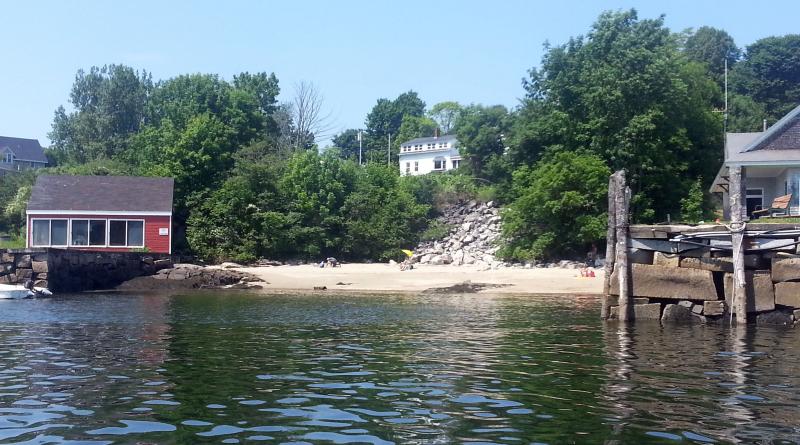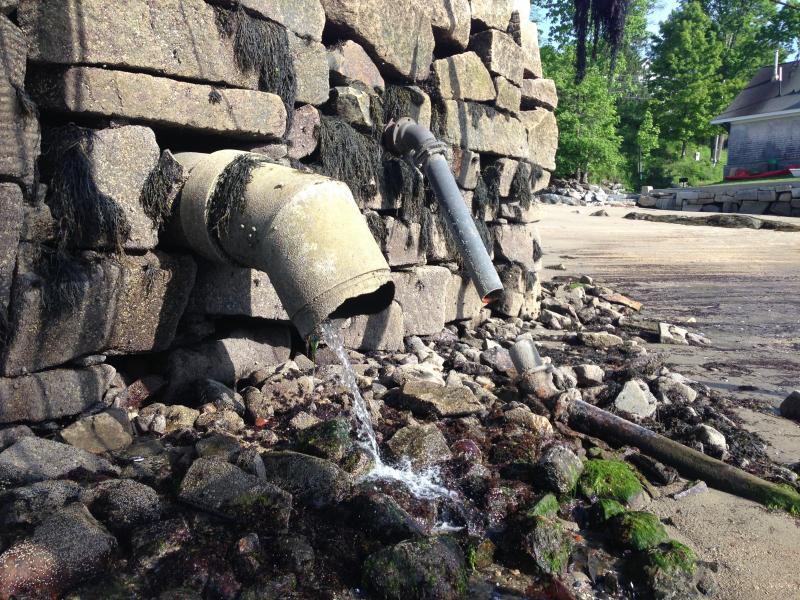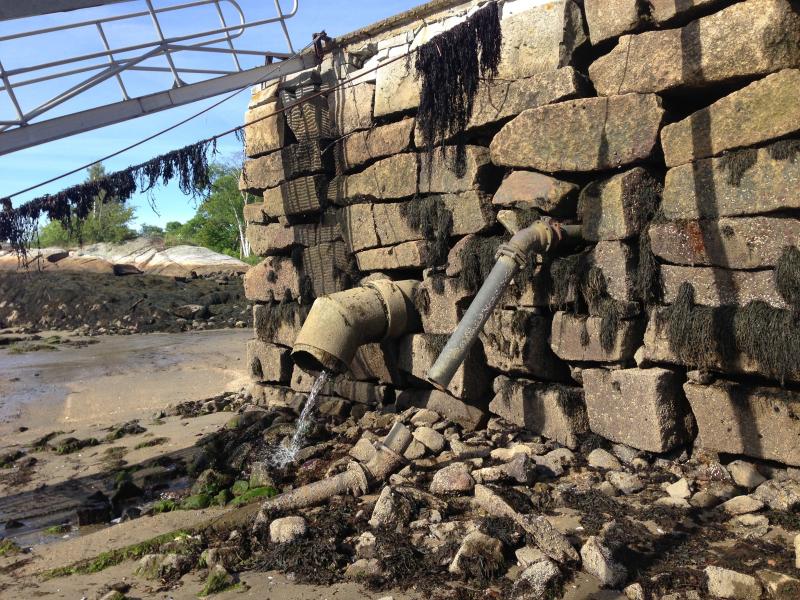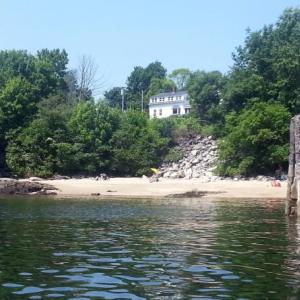Investigators narrow Rockport Harbor pollution mystery, home survey to come
ROCKPORT — Pollution at Goodies Beach in Rockport has been isolated to a human source; however, the culprit remains elusive and those investigating are running out of options.
Bob Kennedy, who chairs the Rockport Water Quality Committee and has 30 years experience with water testing, said the town first became aware of the issue in 2009 when Maine Healthy Beaches began taking bacterial samples. The results proved the presence of fecal indicator bacteria, which are considered active at 104 CFU/100 ml in saltwater. The bacteria becomes a problem at Goodies Beach following significant rainfall when these levels often rise above 1,000 CFU/100 ml.
“These indicator bacteria can cause some health problems, maybe skin rash or ear problems; but what it tells us is that there are probably other things, viruses, other bacteria, protozoa that are showing up with it,” said Kennedy.
Bill Chapman, Chairman of the Rockport Select Board, said the town immediately recognized the bacteria as a serious issue and joined the Clean Harbor Initiative. An orange or red sign raised at Goodies Beach is a clear warning that swimming may be unsafe.
Goodies Beach is part of the town’s Marine Park, a small, sandy spot where families enjoy swimming and playing in the water.
Kennedy said the bacterial sample approach is not ideal. It can take 24 hours for results to come back, so the town has taken a different approach based on rainfall. Whenever a quarter of an inch accumulates over a 48-hour period the warning sign is raised.
“Last year, the difference would be that there would have been eight advisories based on the bacteria, but we actually posted 24 to be safe,” said Kennedy.
EPA tests in 2012 showed signs of certain metabolized chemicals including Acetaminophen, the active ingredient in Tylenol, and Cotinine, the metabolized byproduct of Nicotine. Kennedy said these signs were a clear signal of human source.
“There aren’t too many raccoons who are smoking or using a nicotine patch,” said Kennedy.
Maine Healthy Beaches Program receives funding from the U.S. Environmental Protection Agency, and staff support from the University of Maine Cooperative Extension to monitor water quality at Maine's 55 public access beaches.
Samples are collected and analyzed for the enterococcus bacteria, which is an indication of the presence of fecal contamination from humans and animals including dogs and waterfowl.
In 2013, MHB processed more than 2,156 samples at 148 monitoring locations from the beaches in York County to Bar Harbor and 95 percent of the days were free of beach advisories or closures.
The number of exceedances rose slightly from 156 in 2012 to 176 in 2013. Nearly 85 percent of exceedances were preceded by rainfall, according to a news release from Maine Healthy Beaches.
Four beach management areas, Goodies Beach in Rockport, Old Orchard Beach Ocean Park, East End Beach and Goose Rocks, accounted for 40 percent of the reported beach action days in 2013.
See the monitoring results at www.mainehealthybeaches.org. Local beach managers make the decision to post an advisory or closure.
Kennedy, Chapman and others, including Harbormaster Abbie Leonard, have been on the trail of this human source since these results came in.
By testing water drainage systems linked to a pipe that empties at Goodies Beach an area encompassing 47 houses has been defined as the origin of the human pollution. The area stretches from a portion of Amesbury Hill to Route 1 and includes Pleasant Street, Pine Street and Pascal Avenue.
The 47 homes, which tie into the town’s sewer system, have been inspected for plumbing violations or inappropriate connections to that system. In addition the sewage and drainage systems have been tested with smoke, dye and video techniques. Chapman said he was told the town’s sewage system was clean, and that it’s in great shape in fact.
This affirmation was a hit to the investigative team who expected a leaking sewage system to be a straightforward solution.
“We’re sort of running out of tools, which brought us to the idea of the survey,” said Kennedy.
At their July 14 regularly scheduled meeting, the Rockport Select Board approved that a survey be distributed to these 47 houses asking residents to declare the use of two pharmaceuticals: Acetaminophen and Carbamazepine, which is used to treat nervous disorders.
Kennedy is in charge of writing and distributing the survey. He said he is trying to approach it as tactfully as possible and wants to reiterate that no records of the survey will be kept or shared.
If the survey does produce results pointing to one household the next step will be to take soil samples to locate the exact spot where sewage and drainage intersect. However, Kennedy does not think this would solve the mystery, entirely.
“If we do find the human source and eliminate it, I still think there’s going to be episodes, particularly following rain events, where we continue to have high bacteria levels. It’s animals, pets, birds and wildlife waste. A rainfall event flushes it down these drains and it ends up by the beach,” said Kennedy.
So Kennedy sees a solution through achieving a pair of management goals: Getting rid of the potentially dangerous human impact, and effectively dealing with the nonhuman component. Options for this second target are limited.
The pipe cannot be extended very far into the harbor because of a zone protected for dredging, so the waste would most likely float back on the beach, anyway.
Moving the pipe would only move the waste downstream, probably in someone’s backyard, an inappropriate solution, as well.
Kennedy said the third option is the most viable: Treatment at the site on Goodies Beach. Using chlorine or UV light, the harmful bacteria could be eliminated right at Goodies Beach.
An engineering decision should be made on how to combat the bacteria through a treatment option within the next year. In the meantime Kennedy and Chapman agree that the water at Goodies Beach is mostly safe as long as the sign has not been raised.
“The harbor has a very high water turnover rate. It flushes itself once every 24 or 48 hours so there’s a complete turnover. Forty-eight hours after heavy rainfall it’s reasonable to assume the water is safe,” said Chapman.
Reach Ari Salas at news@penbaypilot.com; 207-706-6657.
Event Date
Address
United States
































